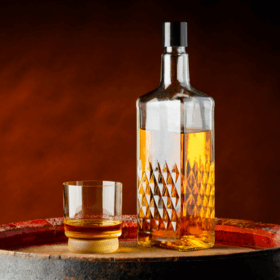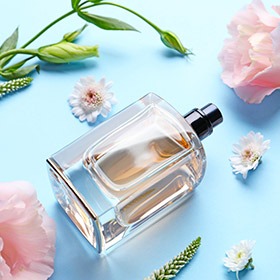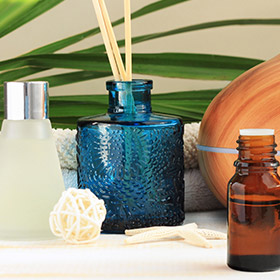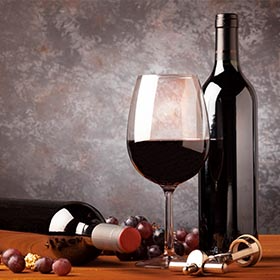Introduction
Do you want to open a bottle of ice-cold beer on a hot summer day? Do you need beer to accompany you at a fun party with friends and family on a Friday night? Or perhaps you’re looking for a bottle of beer to enjoy during an exciting football game? Beer is a staple in many settings, but have you ever wondered about the secret behind glass beer bottles? Why are glass beer bottles typically green or brown? Let’s explore the fascinating world of glass beer bottles to uncover the mystery of their colors. Understanding the significance of these colors is crucial for retailers, wholesalers, and anyone involved in the beer packaging industry. At the same time, we’d like to introduce Roetell, the leader in glass beer bottle packaging.
A Brief History of Beer Bottles
Beer is believed to have been invented around 3,500 BCE, and the containers used for storing beer have evolved significantly over the millennia. Early civilizations relied on wooden barrels and porcelain vessels, which lacked the advanced sterilization and sealing technology of today. This led to numerous problems, including contamination and spoilage.
It wasn’t until the 19th century that glass beer bottles became popular. The advent of glassmaking technology enabled breweries to produce stronger and more reliable bottles that could preserve the quality of beer for longer periods. The introduction of corks, and later crown caps, further enhanced the storage capabilities of glass bottles, allowing for effective carbonation and long-term flavor preservation.
Initially, beer bottles were transparent, allowing consumers to see the liquid inside. However, it soon became clear that this transparency came at a cost—exposure to sunlight could cause undesirable changes in taste, negatively affecting the beer. This realization led to the exploration of different glass colors for bottles, with brown and green glass emerging as the most prominent choices. Understanding why beer bottles are green or brown is essential for retailers and wholesalers in the beer packaging industry, as it directly impacts product quality.
Understanding Beer Bottle Colors

The color of beer bottles serves specific purposes, particularly in protecting bottled beer from environmental factors. While glass is an excellent material for storing beer, not all glass offers the same degree of protection. What happens when you open a well-preserved bottle of beer and then pour it into a clear glass, leaving it in the sun for a while? You may discover that the beer has developed a skunk-like odor.
One of the most critical factors in beer preservation is protection from ultraviolet (UV) rays, which can cause chemical reactions in hops, leading to the unpleasant flavors commonly associated with “skunking.” This issue is particularly problematic for light-colored beers, which are more susceptible to these changes.
Comparison of Bottle Colors
Color | UV Protection | Common Beer Types | Market Preference |
Green | Moderate | Lagers, IPAs | 25% of market |
Brown | High | Pale Ales, IPAs, Stouts, Porters | 70% of market |
Clear | Low | Specialty beers, non-traditional | 5% of market |
The choice of bottle color is essential for maintaining the integrity of the beer. The statistics illustrate popular trends in bottle color usage, highlighting why brown glass is favored for preserving beer quality. While green beer bottles have a long-standing association with certain beer styles, such as those from green beer brands, they provide only limited UV protection. Although beer in green bottles looks appealing, the green color allows a certain amount of light to pass through, which can alter the beer’s flavor if exposed to sunlight for extended periods.
Conversely, brown glass bottles are widely considered the best choice for beer packaging, particularly for light-sensitive beers. The darker hue of brown bottles provides excellent UV protection, minimizing the risk of light-induced spoilage. This is crucial for maintaining the taste of a bottle of beer, especially for those who enjoy beer in a brown bottle. Understanding why are beer bottles brown can help retailers and wholesalers make informed decisions about packaging.
In summary, while both green and brown beer bottles serve a purpose, the choice of bottle color significantly impacts the beer’s quality. Brown bottles are the preferred option for preserving flavor and freshness, making them a staple in the beer packaging industry.
The statistics above illustrate the prevailing trends in bottle color usage, highlighting the importance of brown glass in maintaining beer quality.
Why Are Beer Bottles Green or Brown?
The Chemistry Behind Skunks
As mentioned earlier, “skunking” occurs when certain compounds in hops, specifically iso-alpha acids, react with UV light. This reaction leads to the formation of 3-methyl-2-butene-1-thiol (MBT), a compound responsible for the skunky aroma and taste in beer. Brown glass significantly reduces UV exposure, allowing breweries to maintain the intended taste of their beers. Understanding why beer bottles are brown is crucial for preserving flavor and preventing spoilage.
Historical Background
The choice of green and brown glass has historical roots. Brown glass bottles are the ideal material for beer packaging as they provide the ultimate protection against UV light. However, during World War II, demand for brown glass surged, leading many companies to resort to producing green beer bottles instead. While green is less protective than brown, it is still better than clear glass.
Green glass has been popularized by iconic green beer brands like Heineken and Corona, which use this color to evoke freshness and quality. These brands have built strong market images, making their choice of bottle color an integral part of their branding strategy.
In contrast, brown glass has become the standard choice for many brewers due to its superior protective properties. Brands recognize that brown bottles can significantly reduce the risk of light damage, especially for beers that are more susceptible to spoilage. Therefore, many traditional and craft breweries continue to choose brown glass to enhance product integrity.
In summary, understanding why are beer bottles green or brown is essential for retailers and wholesalers in the beer packaging industry. The choice of color impacts not only the aesthetics of bottled beer but also its quality and shelf life.
Top Tips for Choosing the Right Beer Bottle
When choosing a bottle color, breweries must consider several factors, including light sensitivity, brand image, and market trends. The choice between green and brown glass often depends on the type of beer produced and the intended target market.
1. Beer Type
The type of beer plays an important role in determining the appropriate bottle color. Light-colored beers may be suited to green bottles to enhance the perception of freshness, while darker beers should be bottled in brown bottles to avoid light exposure. Understanding why beer bottles are green or why they are brown can guide breweries in making this decision.
2. Brand Image
The choice of bottle color can communicate brand values and identity. Green may suggest modernity and freshness, while brown suggests tradition and reliability. Brands should consider how their packaging aligns with their overall marketing strategy, especially if they aim to be recognized among green beer brands or craft breweries using brown glass.
3. Consumer Preferences
Understanding the preferences of target markets can guide packaging choices. Studying consumer attitudes toward bottle color can provide valuable insights that allow brands to tailor their products to market needs. This includes recognizing whether consumers prefer beer in green bottles or beer in brown bottles.
4. Sustainability Considerations
With growing concerns about environmental impact, many breweries are now considering the sustainability of their packaging. Returnable glass bottles are increasingly becoming the standard as consumers seek products that align with their environmental values. This shift may include a move away from plastic beer bottles and a focus on reducing the use of empty beer bottles.
Beer Bottle Innovation
The beer packaging industry continues to evolve, with innovations that not only enhance functionality but also sustainability. Some notable advancements include:
Lightweight Glass
A major innovation in glass manufacturing has been the development of lightweight glass bottles. Reducing the weight of bottles not only lowers shipping costs but also reduces the carbon footprint associated with shipping. Many breweries are adopting these lighter bottles to enhance their sustainability efforts, ultimately benefiting both the environment and their bottom line.
Recyclable Materials
Many companies are now working to create bottles made from recyclable glass. This shift aligns with consumer demand for sustainable packaging and contributes to the circular economy. Brands that prioritize recyclability often highlight this in their marketing efforts, attracting environmentally conscious consumers who care about what their beer bottles are made of.

Unique Shapes and Designs
Customized bottle designs and shapes are becoming increasingly popular in the industry. Unique packaging helps brands stand out in a crowded market and leaves a memorable impression on consumers. Breweries are experimenting with a variety of bottle shapes to enhance their visual appeal and ensure their green beer bottles or brown beer bottles grab attention on store shelves.
Technological Advancements
The glass manufacturing process itself has also undergone technological advancements that have improved efficiency and quality. Innovations in production technology allow for more precise control of bottle thickness and color consistency, ensuring that every bottle meets strict quality standards. This leads to superior products that enhance the consumer experience, whether they choose beer in a green bottle or beer in a brown bottle.

Bottle Capacity
While the 12-ounce bottle remains the classic choice for many breweries, current trends indicate a shift toward larger glass beer bottles. These larger bottles are becoming increasingly popular among beer lovers, especially during social gatherings like parties or football games, where sharing a bottle of beer can enhance the experience.
Different Beer Bottle Caps
Choosing the right bottle cap is essential for personalizing beer bottles. Custom-designed bottle caps can not only enhance the aesthetic appeal but also ensure that the contents remain fresher. Additionally, swing-type bottle caps are another innovation in beer bottle design. This cap style provides a premium, reusable experience, adding both value and functionality to the packaging.
Roetell: A Leader in Tradition and Innovation in Glass Beer Bottles
At Roetell Glass, we understand the importance of quality and innovation in beer packaging. We are committed to producing high-quality glass bottles that ensure your beer retains its flavor and freshness, whether in a green beer bottle or a brown bottle.
Our Products
Roetell offers a wide range of glass beer bottle options, including both green and brown glass bottles. Our bottles are manufactured to industry standards, ensuring durability and reliability. Whether you are looking for traditional styles or innovative designs, Roetell can provide you with the solutions you need to succeed in the competitive beer market.
Sustainable Practices
We are dedicated to sustainability and employ environmentally friendly practices in our manufacturing process. Our returnable glass bottles help reduce environmental impact, allowing breweries to align their packaging choices with sustainability goals. This commitment to sustainability is essential as consumers increasingly prioritize products that support eco-friendly practices.
Custom Options
In addition to our standard products, Roetell also offers customized options to help brands create a unique identity. From discussing ideas to planning sketches, and from implementing concepts to confirming samples and producing large quantities, we carefully guide you through every step. This personalized service enhances your brand and marketing efforts, ensuring your products stand out in the competitive beer landscape.

Conclusion
The color of beer bottles plays a vital role in preserving the quality and taste of beer while influencing consumer perception and brand identity. Understanding the differences between green and brown glass beer bottles empowers retailers and wholesalers to make informed decisions that enhance their offerings. At Roetell Glass, we are committed to providing top-quality glass packaging solutions that meet the evolving needs of the beer industry. Whether you are a brewer seeking the best packaging options or a retailer looking to stock high-quality products, Roetell is here to support your success.






